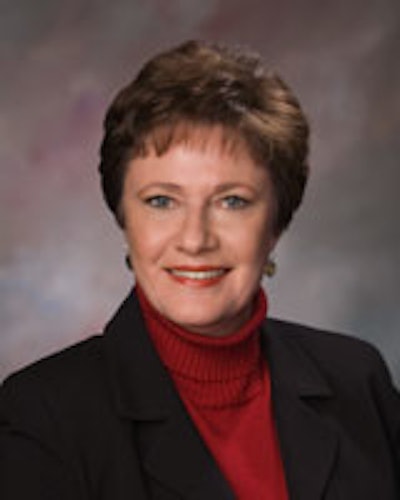
The American Heart Association’s South Central Affiliate in Little Rock, Arkansas, has seen revenue at its annual Heart Ball grow by 353 percent since 2001, when Carol Dyer took the reins as senior director. The annual event now attracts a sellout crowd of 1,090 guests from the greater Little Rock area every February, and pulled in $1,023,884 this year.
In recent years, the American Heart Association’s national headquarters has tapped Dyer to educate chapters around the country and share the secret to her success with local chapter leaders. As the troubled economy leaves many nonprofits worried about raising money in the coming months, we talked to Dyer about increasing prices, keeping volunteers happy, and lining up bidders before an auction even starts.
How did you increase Heart Ball revenue?
We couldn’t add more room and couldn’t really take anything away, so what I’ve done is fine tune and elevate the existing elements. For example, we raised the sponsorship prices. A table that used to be $2,000 is now $5,000, plus I’ve developed about 10 new sponsorships. We started out with corporate and medical sponsorships, now we also have a live auction sponsor, a silent auction sponsor, a reception sponsor, a volunteer sponsor, a band sponsor, a valet sponsor, and a signage sponsor. Also, in order to accommodate the sponsorship increases, we also elevated the ticket prices to $500 for an individual ticket.
How did you keep guests from defecting?
It definitely helps that the event has a really good reputation and continues to sell out. We added value to the entire event by refining the presentation. We elevated the quality of the meal with a focus on unique desserts. We’ve also refined the script and the awards, and have built them into something that’s really sought-after and very prestigious in the community.
What did you change about the auction?
We have so many nonprofit organizations in Little Rock, so there is a lot of competition for those donor dollars. We upgraded the quality of auction items, and we strive for quality versus quantity. It takes as much time to ask, obtain, and do paperwork for lesser-quality items as it does for more prestigious ones. Silent auction items traditionally generate a minimum of 50 percent and live auction items a minimum of 75 percent of retail value. Sometimes it’s easier if you have an item that doesn’t have a set value, like a trip or a visit to a celebrity’s home. For live auction items you’ve got to have universal appeal, and we try to limit it to just eight items.
You also have to market your auction items prior to the event. You need to line up interest for items so you know you have at least two and hopefully three people who are going to bid. I’ve been known to call winners from previous years and ask what they’re interested in because that gives them ownership and gives you a bidder. Sometimes I think people are afraid to make contacts like that. Our revenue from our auction has peaked over the past two years. It’s now at about $250,000 for both silent and live together. When I first came on board, the revenue was $100,000 for both.
How have you changed the role of the volunteer base?
I’ve built a platform that provides us with a three-year commitment, which gives us great continuity. It was a one-year deal before, which was hard because I had to take someone through the entire learning process every year. This continuity also helps us recruit higher-quality volunteers. Another thing I work on is succession planning. To have the 2011 chair in place right now is terrific. Last year I probably had four meetings with my 2009 chairs prior to the 2008 event even taking place.
There is only one venue in Little Rock large enough to accommodate the Heart Ball: the Wally Allen Ballroom at the Statehouse Convention Center. What are some of the challenges there?
We’re limited as to having an opportunity to change the setup of the room. We have a really large stage that accommodates a band and our award ceremonies, but we always have to have the stage at the end of the room. I think it would be fun to switch it up a bit from year to year. We also have no opportunity to expand. We can’t put any more tables in there. And I’d love it if we had a better opportunity to display our auction items. Right now we have a really nice foyer, but I wish it were larger because we have the live and silent auction items out there, plus our bar area.
What do you tell other Heart Association planners?
You have to make it easy for people to volunteer. The way you make it easy is you prepare the agendas and the reports. You do all the administrative work and everything else you can to help them help you. So many times I’ve seen a fund-raiser think that this is a volunteer’s job. It’s not their job. It’s my job. And I ask for help in finding good volunteers in the community. It’s 90 percent relationship building. You have to say thank you, write hand-written notes, pick up the phone—whatever’s going to make the most impact on them.



















